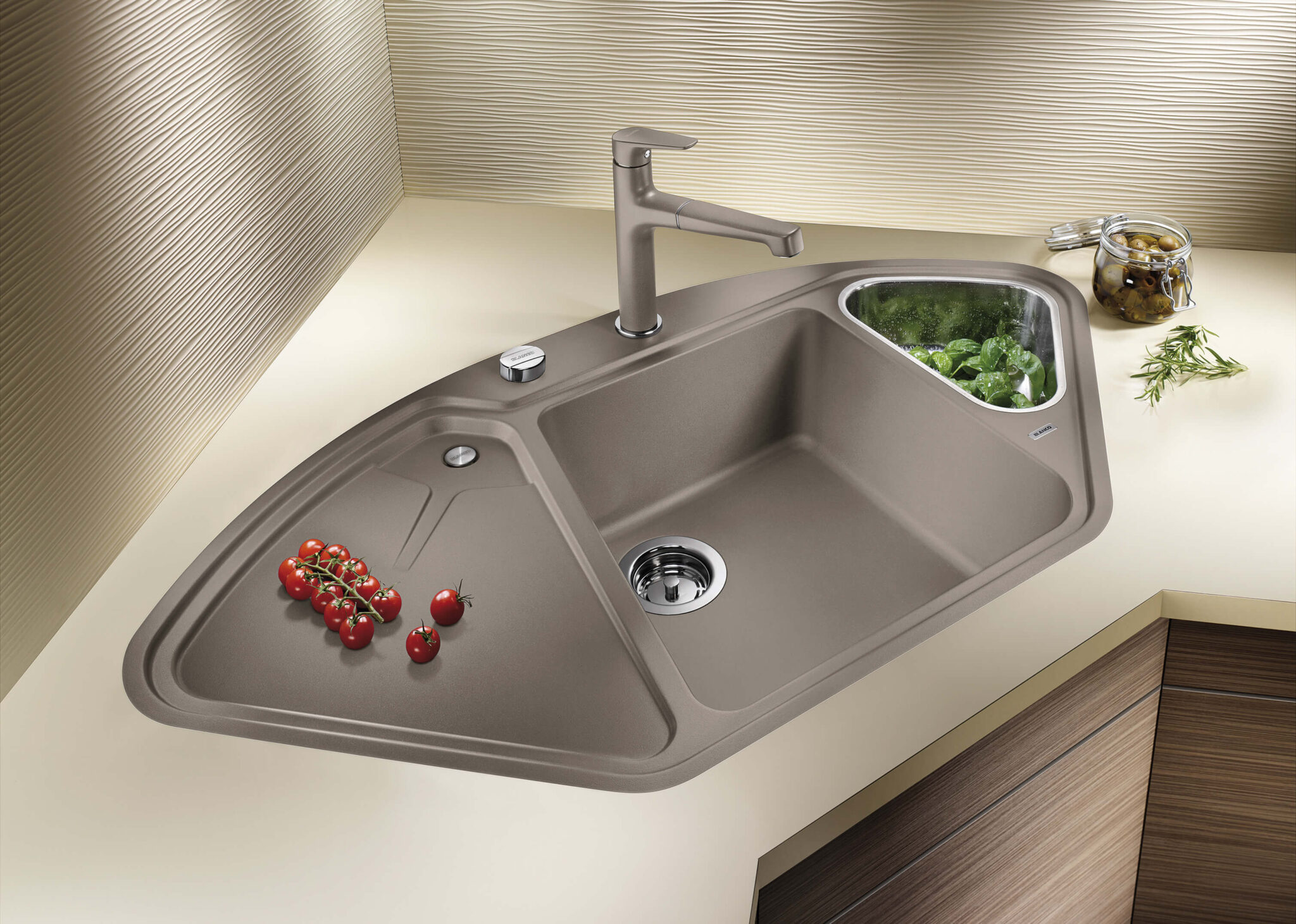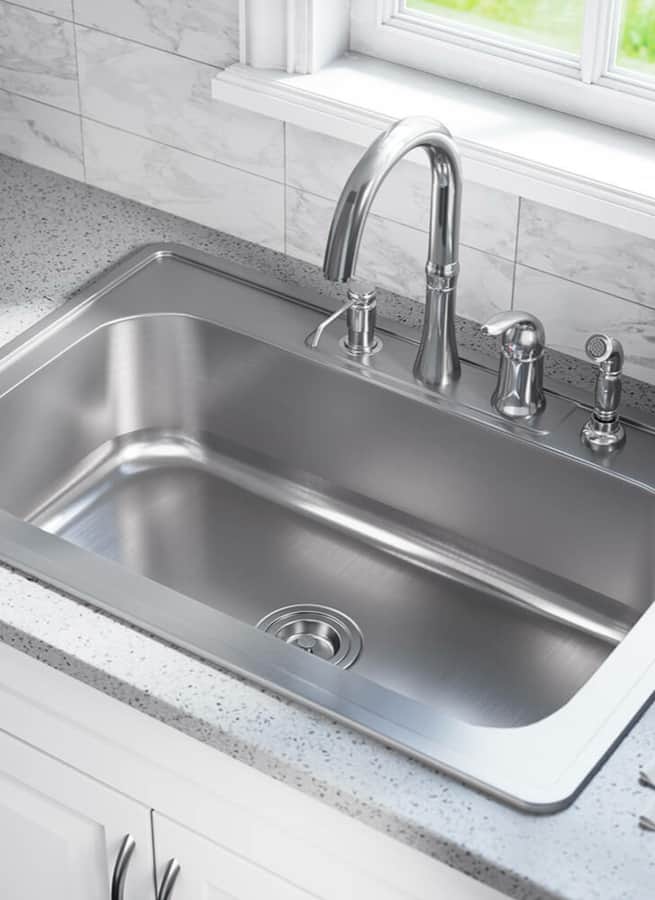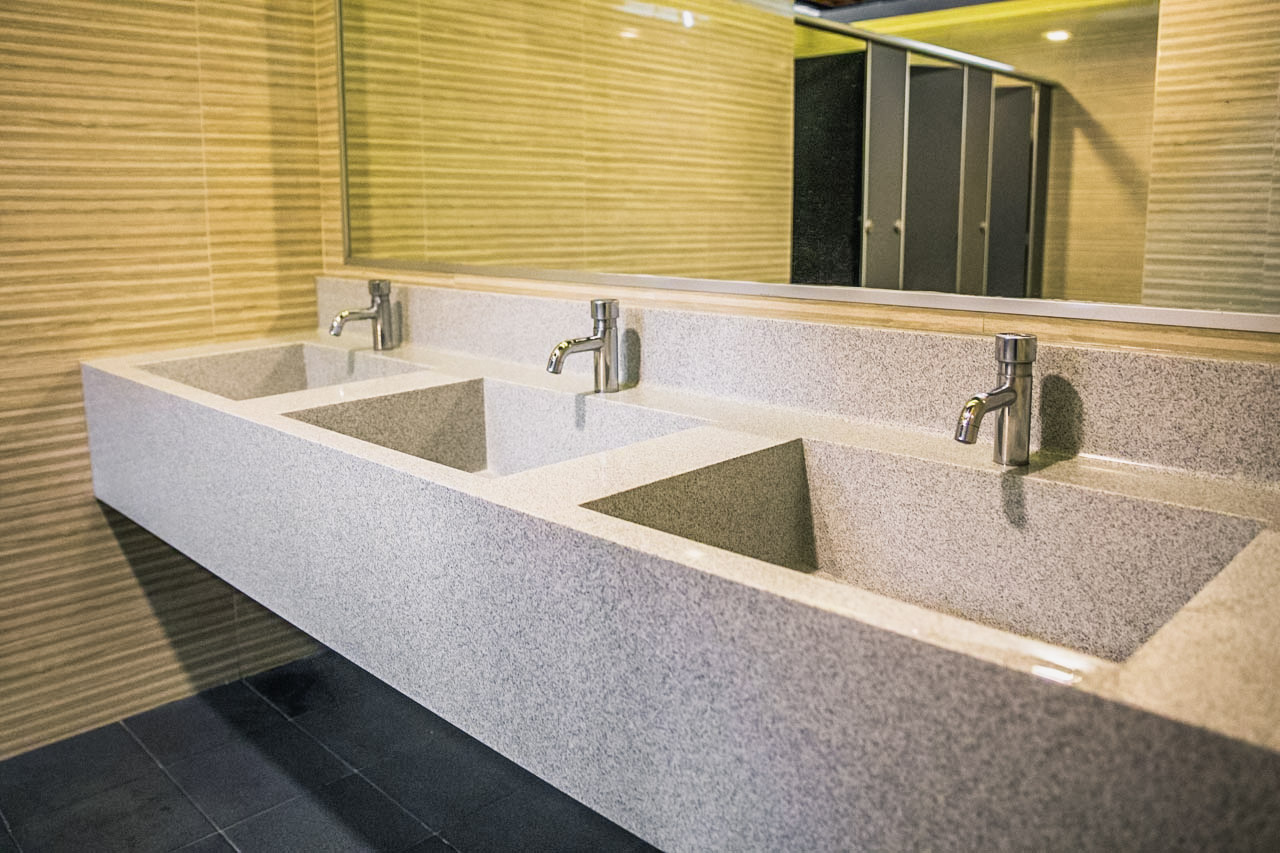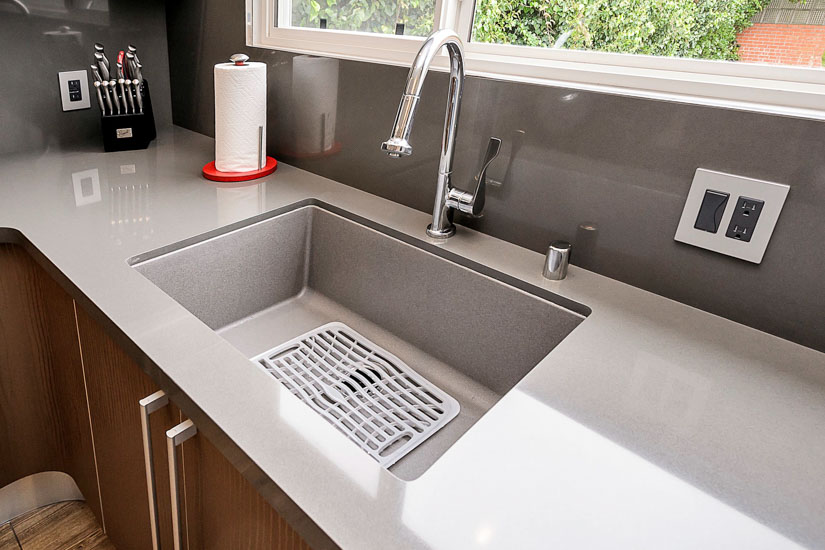Undermount Kitchen Sink Mounting Options
Undermount kitchen sinks are a popular choice for modern kitchens due to their sleek and seamless design. These sinks are installed underneath the countertop, creating a smooth and uninterrupted surface. There are a few different mounting options for undermount kitchen sinks, depending on the type of countertop and the weight of the sink.
One popular option is using brackets and epoxy to secure the sink to the underside of the countertop. This method is best for heavier sinks and solid surface countertops, as it provides strong support and stability.
Another option is using a sink clip system, which involves attaching clips to the underside of the sink and then securing them to the countertop with screws. This method is best for lighter sinks and works well with most countertop materials.
If your countertop is made of granite or other natural stone, you may need to use specialized mounting hardware designed for this type of material. These mounting options typically involve drilling holes into the stone and using anchors and screws to secure the sink.
Top Mount Kitchen Sink Mounting Options
Top mount, or drop-in, kitchen sinks are a traditional and budget-friendly option. These sinks are installed by dropping them into a hole cut out in the countertop, with the edges of the sink resting on the countertop surface. The most common mounting options for top mount kitchen sinks include using mounting clips, adhesive, or a combination of both.
Mounting clips are attached to the underside of the sink and then tightened to secure the sink in place. Adhesive, such as silicone caulk, can also be used around the edges of the sink to provide additional support and prevent water from seeping underneath.
For a more secure installation, some top mount sinks come with rim reinforcement, which involves attaching metal brackets to the sink's rim and then screwing them into the countertop.
Farmhouse Kitchen Sink Mounting Options
Farmhouse sinks, also known as apron front sinks, are a popular choice for adding a touch of rustic charm to a kitchen. These sinks have a large front panel that extends beyond the edge of the countertop, creating a unique and eye-catching look. There are a few different ways to mount a farmhouse sink, depending on the style and weight of the sink.
Some farmhouse sinks come with a built-in apron that rests on top of the cabinet, allowing the sink to be mounted directly onto the countertop. This method works well for lightweight sinks and laminate or solid surface countertops.
For heavier or stone farmhouse sinks, a custom support system may be necessary. This can include building a support frame underneath the sink or using specialized brackets and fasteners to secure the sink to the cabinet.
Wall Mount Kitchen Sink Mounting Options
Wall mount kitchen sinks are a space-saving option that can add a unique and modern look to a kitchen. These sinks are installed directly onto the wall, without the need for a countertop. The most common mounting options for wall mount kitchen sinks include using brackets, supports, and drain assemblies.
Brackets are attached to the wall and then tightened to hold the sink in place. Support bars may also be used to add extra stability. Drain assemblies are installed to connect the sink to the plumbing and provide proper drainage.
It is important to make sure the wall is sturdy and able to support the weight of the sink before installing a wall mount kitchen sink. It is also recommended to consult a professional plumber for proper installation.
Corner Kitchen Sink Mounting Options
Corner kitchen sinks are a great option for maximizing counter space in a small kitchen. These sinks are designed to fit into the corner of a countertop, with two exposed sides. The most common mounting options for corner kitchen sinks include using mounting clips or brackets.
Mounting clips are attached to the underside of the sink and then tightened to secure the sink in place. Brackets may also be used to provide additional support and stability.
It is important to measure the corner space accurately before purchasing a corner kitchen sink to ensure a proper fit. Additionally, make sure to choose a mounting option that is suitable for the type and weight of the sink.
Apron Front Kitchen Sink Mounting Options
Apron front, or farmhouse, sinks can add a touch of charm and elegance to any kitchen. These sinks have a large front panel that extends beyond the edge of the countertop, creating a unique and eye-catching look. The most common mounting options for apron front kitchen sinks include using brackets, supports, and specialized hardware.
Brackets and supports can be used to secure the sink to the cabinet and provide additional stability. Specialized hardware, such as brackets with adjustable legs, can also be used to support the sink's weight and prevent it from sagging over time.
It is important to check the weight and dimensions of the sink before choosing a mounting option to ensure a secure and stable installation.
Drop-In Kitchen Sink Mounting Options
Drop-in kitchen sinks, also known as self-rimming or top mount sinks, are a popular and affordable option for most kitchens. These sinks are installed by simply dropping them into a hole cut out in the countertop, with the edges of the sink resting on the countertop surface. The most common mounting options for drop-in kitchen sinks include using mounting clips, adhesive, or a combination of both.
Mounting clips are attached to the underside of the sink and then tightened to secure the sink in place. Adhesive, such as silicone caulk, can also be used around the edges of the sink to provide additional support and prevent water from seeping underneath.
For a more secure installation, some drop-in sinks come with rim reinforcement, which involves attaching metal brackets to the sink's rim and then screwing them into the countertop.
Integrated Kitchen Sink Mounting Options
Integrated kitchen sinks are a popular choice for modern and minimalist kitchens. These sinks are made from the same material as the countertop, creating a seamless and sleek look. The most common mounting options for integrated kitchen sinks include using epoxy or a combination of adhesive and mechanical fasteners.
Epoxy is applied to the edges of the sink and then the sink is set into place on the countertop. Adhesive and mechanical fasteners, such as screws or brackets, can also be used for added support and stability.
It is important to consult a professional for proper installation of integrated kitchen sinks to ensure a seamless and secure fit.
Flush Mount Kitchen Sink Mounting Options
Flush mount kitchen sinks, also known as flush-inset or integrated sinks, are a popular choice for modern and minimalist kitchens. These sinks are installed flush with the countertop, creating a smooth and seamless surface. The most common mounting options for flush mount kitchen sinks include using mounting hardware and adhesive.
Mounting hardware, such as clips or brackets, can be used to secure the sink to the underside of the countertop. Adhesive, such as silicone caulk, can also be applied around the edges of the sink for added support and to prevent water from seeping underneath.
It is important to choose a mounting option that is suitable for the type and weight of the sink, as well as the material of the countertop.
Undercounter Kitchen Sink Mounting Options
Undercounter kitchen sinks are a popular choice for modern and minimalist kitchens. These sinks are installed underneath the countertop, creating a seamless and uninterrupted surface. The most common mounting options for undercounter kitchen sinks include using brackets and adhesive.
Brackets are attached to the underside of the sink and then secured to the countertop with adhesive. Some sinks may also come with a built-in support system, such as metal bars or grates, to provide added stability.
Make sure to choose a mounting option that is suitable for the weight and type of sink, as well as the material of the countertop, for a secure and stable installation.
Different Mounting Options for Your Kitchen Sink

Undermount Sinks
 Undermount sinks
are a popular choice for modern kitchen designs. This mounting option involves attaching the sink directly underneath the countertop, creating a seamless and clean look. The edge of the countertop sits on top of the sink, providing a smooth and uninterrupted surface. This type of mounting is perfect for
small kitchen spaces
as it creates an illusion of a larger counter area. It also allows for easy clean-up as there are no edges or crevices for dirt and grime to accumulate.
Undermount sinks
are a popular choice for modern kitchen designs. This mounting option involves attaching the sink directly underneath the countertop, creating a seamless and clean look. The edge of the countertop sits on top of the sink, providing a smooth and uninterrupted surface. This type of mounting is perfect for
small kitchen spaces
as it creates an illusion of a larger counter area. It also allows for easy clean-up as there are no edges or crevices for dirt and grime to accumulate.
Drop-In Sinks
 Drop-in sinks
, also known as top-mount or self-rimming sinks, are the most traditional and common type of mounting option for kitchen sinks. This involves dropping the sink into a pre-cut hole in the countertop, with the edges of the sink resting on top of the counter. The rim of the sink helps to hold it in place, making it a simple and easy installation process. Drop-in sinks come in a variety of shapes and sizes, making it a versatile option for any kitchen design.
Drop-in sinks
, also known as top-mount or self-rimming sinks, are the most traditional and common type of mounting option for kitchen sinks. This involves dropping the sink into a pre-cut hole in the countertop, with the edges of the sink resting on top of the counter. The rim of the sink helps to hold it in place, making it a simple and easy installation process. Drop-in sinks come in a variety of shapes and sizes, making it a versatile option for any kitchen design.
Farmhouse Sinks
 Farmhouse sinks
, also known as apron-front sinks, are a popular choice for
rustic or farmhouse-style kitchens
. This mounting option involves the sink being installed directly into the front of the cabinet, with the front of the sink exposed. This creates a charming and nostalgic look and provides extra space for washing larger pots and pans. However, farmhouse sinks can be more challenging to install and may require custom cabinetry to accommodate its size.
Farmhouse sinks
, also known as apron-front sinks, are a popular choice for
rustic or farmhouse-style kitchens
. This mounting option involves the sink being installed directly into the front of the cabinet, with the front of the sink exposed. This creates a charming and nostalgic look and provides extra space for washing larger pots and pans. However, farmhouse sinks can be more challenging to install and may require custom cabinetry to accommodate its size.
Wall-Mounted Sinks
 Wall-mounted sinks
are a unique and modern option for kitchen sink mounting. This involves attaching the sink to the wall, with the plumbing and drainage pipes also attached to the wall. This frees up space in the cabinet below and creates a sleek and minimalistic look. However, this option may require additional support for the sink and is not recommended for heavy use.
Wall-mounted sinks
are a unique and modern option for kitchen sink mounting. This involves attaching the sink to the wall, with the plumbing and drainage pipes also attached to the wall. This frees up space in the cabinet below and creates a sleek and minimalistic look. However, this option may require additional support for the sink and is not recommended for heavy use.
Integrated Sinks
 Integrated sinks
are a popular choice for contemporary and minimalist kitchen designs. This mounting option involves the sink and countertop being made from the same material, creating a seamless and unified look. This option is not only aesthetically pleasing but also practical as there are no seams or edges for dirt to collect. However, integrated sinks can be more expensive and may require professional installation.
In conclusion, the mounting option you choose for your kitchen sink can have a significant impact on the overall design and functionality of your kitchen. Whether you opt for a traditional drop-in sink or a modern undermount sink, make sure to consider your kitchen's style and your personal preferences. With the variety of mounting options available, you can find the perfect sink to complement your dream kitchen.
Integrated sinks
are a popular choice for contemporary and minimalist kitchen designs. This mounting option involves the sink and countertop being made from the same material, creating a seamless and unified look. This option is not only aesthetically pleasing but also practical as there are no seams or edges for dirt to collect. However, integrated sinks can be more expensive and may require professional installation.
In conclusion, the mounting option you choose for your kitchen sink can have a significant impact on the overall design and functionality of your kitchen. Whether you opt for a traditional drop-in sink or a modern undermount sink, make sure to consider your kitchen's style and your personal preferences. With the variety of mounting options available, you can find the perfect sink to complement your dream kitchen.


















































































































